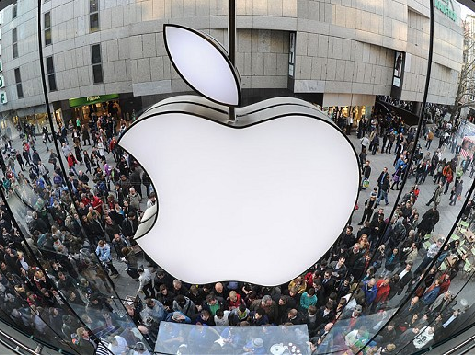Apple Inc.’s (APPL) introduction of the iPhone 6 and 6 Plus has generated all-time record interest, with over 1.9 billion Google search results. Sales, according to Forbes, are at 20 million units, and Apple is reported to have parts for 200 million units more. Yet it appears Apple may have cancelled the thinner and much stronger sapphire material design engineered for both iPhone 6 bodies, and substituted aluminum material just before the introductions. This could explain the design failures in “Bendgate” and “Hairgate” that are beginning to threaten Apple iPhone 6 market share expectations.
The stock of GT Advanced Technologies, manufacturer of the advanced sapphire material for Apple’s iPhone 6 and iPhone 6 Plus, opened at $10.98 a share on October 6, then collapsed by 93% to $.83 when the company filed for bankruptcy. Slated to provide sapphire material for Apple to design extremely thin and light bodies for both iPhone 6 phones, it appears that concerns about sapphire glass shattering may have caused Apple to make a late substitution of aluminum materials used in the iPhone 5. That may also account for the iPhone 6 Plus “bendgate” and iPhone 6 “hairgate” design complaints.
Apple’s new iPhone 6 Plus is getting pounded with 6.5 Google search results on the Internet about the handset bending and warping if the user applies enough pressure to it, such as sitting with the iPhone 6 Plus in a skinny-jeans pocket. The problem even has its own Twitter hashtag of “#bendgate.” Given that the typical customer for the 6 Plus is expected to be the business or finance type, or an avid video gamer–i.e. consumers who disdain skinnyjeans–the bendgate problem has so far not seen as a major disaster for 6 Plus demand.
But now the Internet is quickly “blowing up” with 1.4 million Google search results for both the larger iPhone 6 Plus and smaller iPhone 6 complaining about hairs becoming stuck in the fine seam between the glass and the aluminum frames, and being yanked out when users make a call. The problem already has a Twitter hashtag of “#hairgate”.
GT Advanced Technologies was a tiny solar panel manufacturer with a little factory in Salem, Massachusetts when it shocked the tech world by winning a massive $578 million contract from Apple to produce a sapphire hardened material that is resistant to scratches from virtually all materials, other than diamonds. The size of the contract led most analysts to believe that the new iPhone 6 would feature a sapphire glass cover.
To fulfill their commitment to President Obama to bring manufacturing jobs back to America, Apple bought a 1.3 million square foot factory building in Mesa, Arizona in February for $113 million and leased it to GT. Apple also provided a $438 million pre-payment for GT to hire 700 workers and begin volume sapphire production. GT said on August 14 that despite challenges, it remained confident about the long-term potential of its sapphire glass and expects to receive a final prepayment of $139 million from Apple in October, according to the Arizona Republic.
When GT Advanced Technologies Inc. filed for Bankruptcy Court Protection under Chapter 11 with $85 million in the bank, it seemed to have enough cash to operate for the next six months.
Last quarter, Apple sold 35.2 million highly profitable iPhone 5 handsets, but saw iPad sales slide for the second quarter in a row. “Apple said the growth was helped by demand from Brazil, Russia, India, and China–collectively known as the BRIC countries–where iPhone sales rose 55%”, according to the Wall Street Journal.
It seems clear that Apple, as the World’s Most Valuable Brand, must have made some type of emergency material substitution just before last month’s product launch. Having bet the brand on the success of iPhone 6 and 6 Plus, Apple needs to address #bendgate and #hairgate immediately.
Chriss Street suggests that if you are interested in California tech, please click on “Hydrogen Fuel Cell and Battery-Powered Vehicles Start Competing“

COMMENTS
Please let us know if you're having issues with commenting.